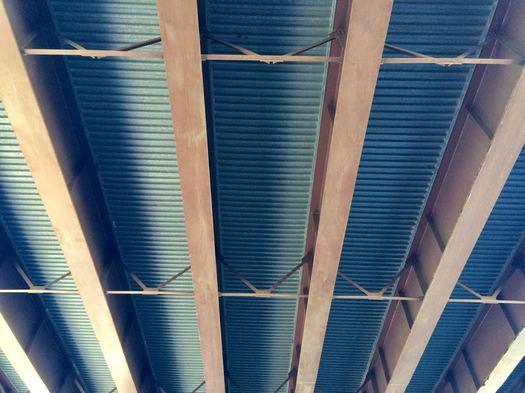Whatever happened to that study about the future of the I-787 corridor?

Back in 2015 there was a series of public meetings to kick off the I-787/Hudson Waterfront Corridor Study, a project intended to help plot the future of 787 from the Port of Albany north to Watervliet. The study got a lot attention because many people saw it as the first step in moving toward knocking the elevated portion of the highway.
Two years later the study is still not out. So what's up?
The agency heading up the study is the Capital District Transportation Committee, in collaboration with the state Department of Transportation and the city of Albany.
Mike Franchini, CDTC's executive director, said via email this week it's taken longer than expected to get input from various stakeholders and produce a draft report. He said the goal now is to introduce a draft version of the study in late fall with a public meeting.
"This has been a very complex and complicated process," he said. "There are many stakeholders with legitimate but sometimes opposing views, including residents who want better access to the waterfront, commuters who need access to jobs in the downtown area, and infrastructure managers who have invested millions of dollars to maintain a safe and efficient transportation system. As transportation planners, it is CDTC's responsibility to identify all these different viewpoints, to address as many concerns as possible, and to develop a consensus which is both achievable and aspirational."
Franchini acknowledged the process has taken a long time -- its roots stretch all the back to October 2014. "But we only get one chance to get it right, and we would rather get it right than hurry and get it wrong."
The reality here is hard. Like reinforced concrete.

A map annotated by the public at one of the meetings in 2015 about the future of 787.
OK, here's some real talk: 787 not coming down anytime soon.
And if it does end up getting turned into a boulevard or something similar, it will be a project that's probably decades away. Officials at the kickoff meetings back in 2015 essentially said as much.
There a couple of reasons the timeline is that long.
The first is that the state has poured millions of dollars into maintaining 787 -- $63 million in the last five years, including a $22 million rehab of the South Mall Expressway. It's not going to just dump that investment.

The second, and more important, reason is that replacing 787 with a boulevard or something similar will be fantastically difficult and complicated because of the engineering, the cost, and the politics. I-787 is one of the Capital Region's key pieces of transportation infrastructure -- segments of it near downtown Albany carry an average of almost 80,000 vehicles a day. The section of the highway in the study area crosses five different municipalities, includes 56 bridges, and a rail line runs along the middle of the segment in downtown Albany (which is regulated by the feds). Replacing the elevated portion will probably have a price tag beyond $500 million.
And that's all before the politics come into play. And if the experience of the I-81 replacement project in Syracuse is any indication, there will be years of fighting among public officials as the suburbs and the city each push for what they think best serves their interests.
That is all not to say that replacing 787 is impossible. It's just that it will be very hard. And if it's going to happen within the next decade or two, the process will involve some sort of outside force or event. Maybe the federal government ends up finally spending $1 trillion on infrastructure projects. Maybe a governor decides to make it a signature project. Maybe there's an earthquake.
So it will be interesting to see what shakes out of this study when it's finally released. Whatever's in there will just be the first step in a very long road.
Earlier
+ Four takeaways from the kickoff for the study about the future of I-787
+ What if tearing down I-787 could actually improve traffic?
Hi there. Comments have been closed for this item. Still have something to say? Contact us.
Comments
You think maybe all the recent repair work on 787 and the arterials was a clue?
... said Herbert on Sep 1, 2017 at 7:58 AM | link
You need to do a story on that HPMS ARNOLD traffic volumes link. That is pretty cool.
... said Tim on Sep 1, 2017 at 9:11 AM | link
Sounds like the study can be a one page document. Best to do that and stop wasting money and time writing a fiction novel.
... said ace on Sep 1, 2017 at 9:11 AM | link
Even though I drive on it every morning, I would love to see 787 go. But even if they found a way to do that, there will still be issue of the railroad tracks--those aren't going anywhere, either.
... said Adam on Sep 1, 2017 at 9:56 AM | link
People are very cynical about feasibility studies, but actually they tend to work well. And they often save a lot of money in the long run. I've seen that firsthand many times. It's frustrating when off the cuff opinions get tossed around without the actual data. The reaction to the gondola study is a great example of that.
The trick of course, is to actually read the study before making up your mind.
... said Justin on Sep 1, 2017 at 10:53 AM | link
That $63M could have easily been cut way down if they didn't have to redo it 5 times.
... said J on Sep 1, 2017 at 4:12 PM | link